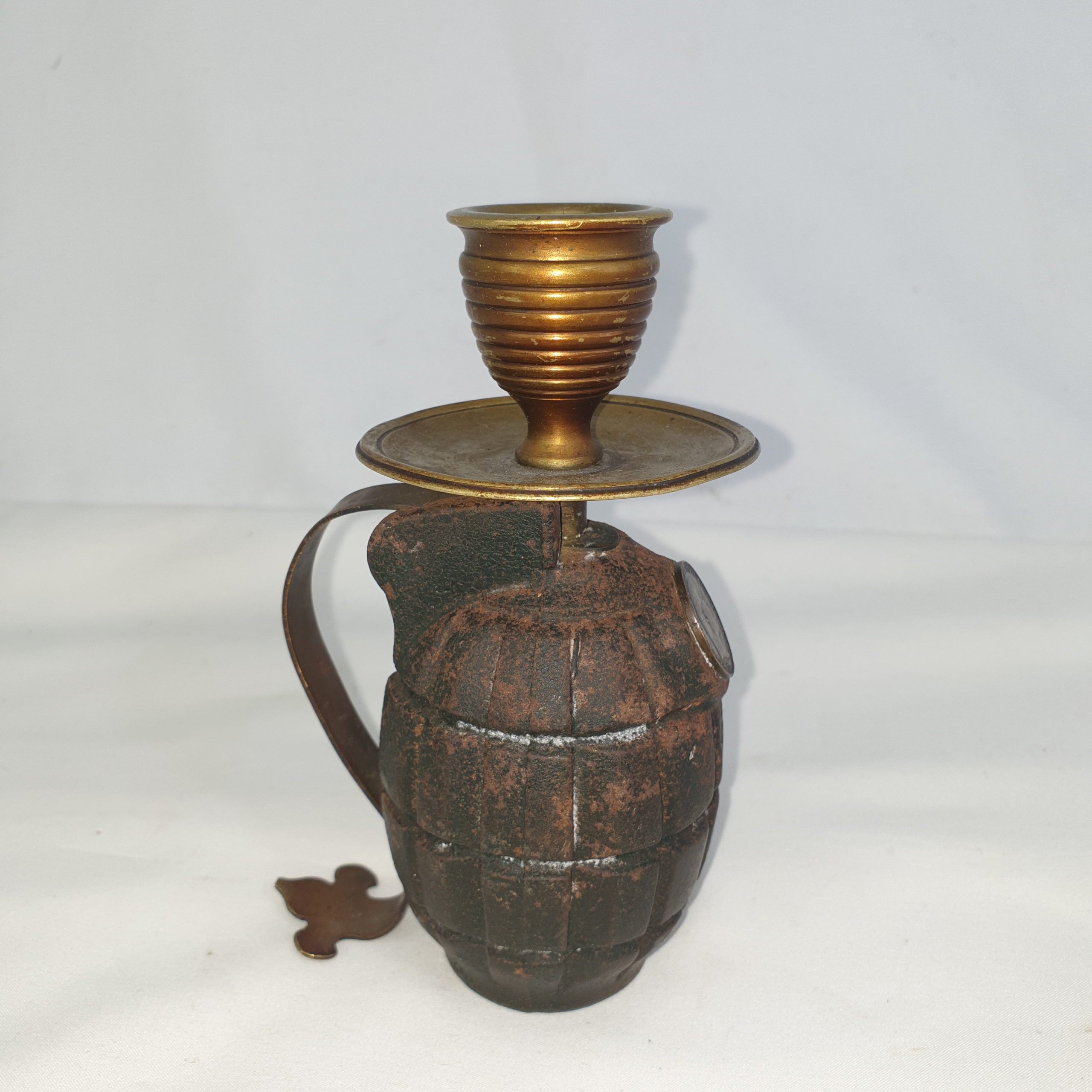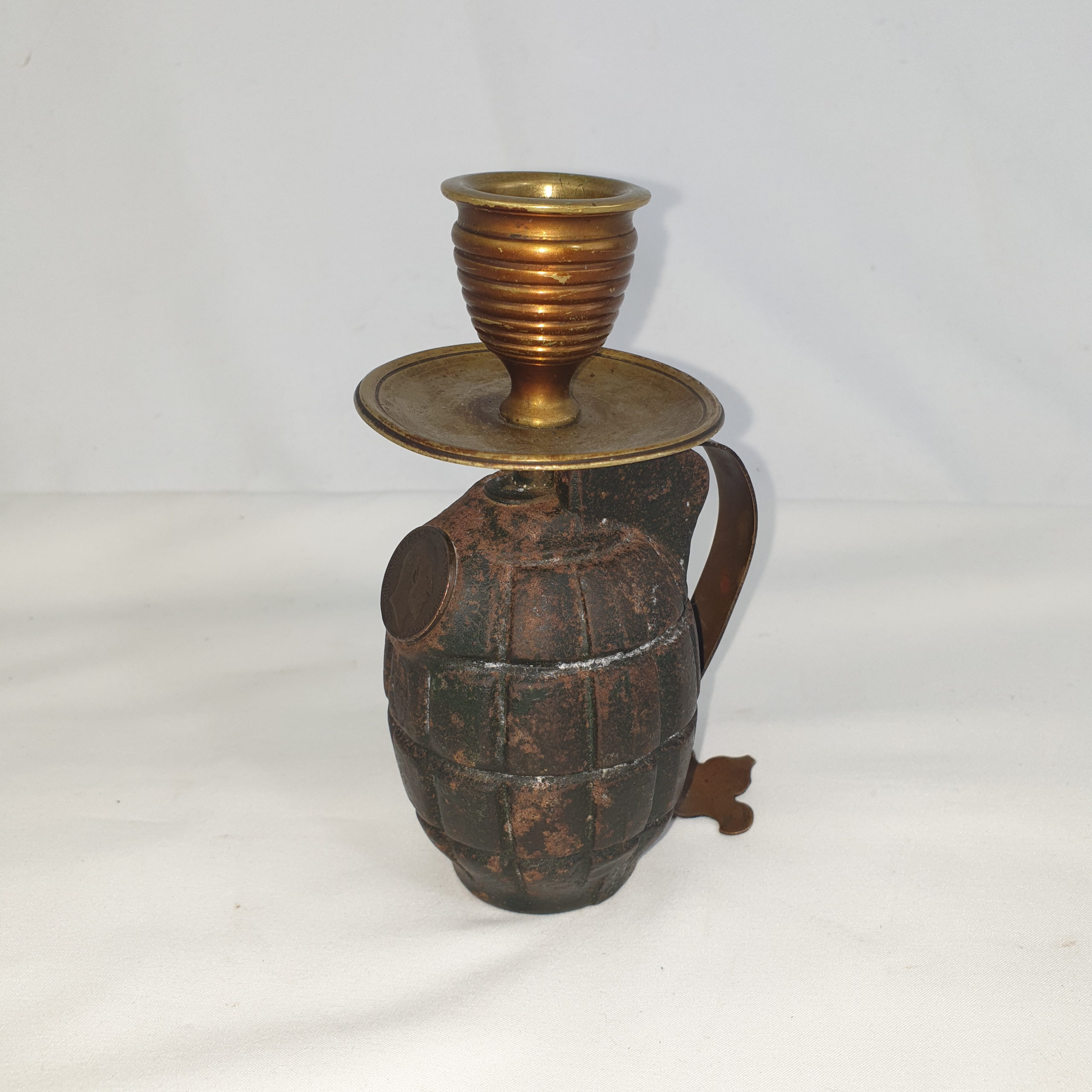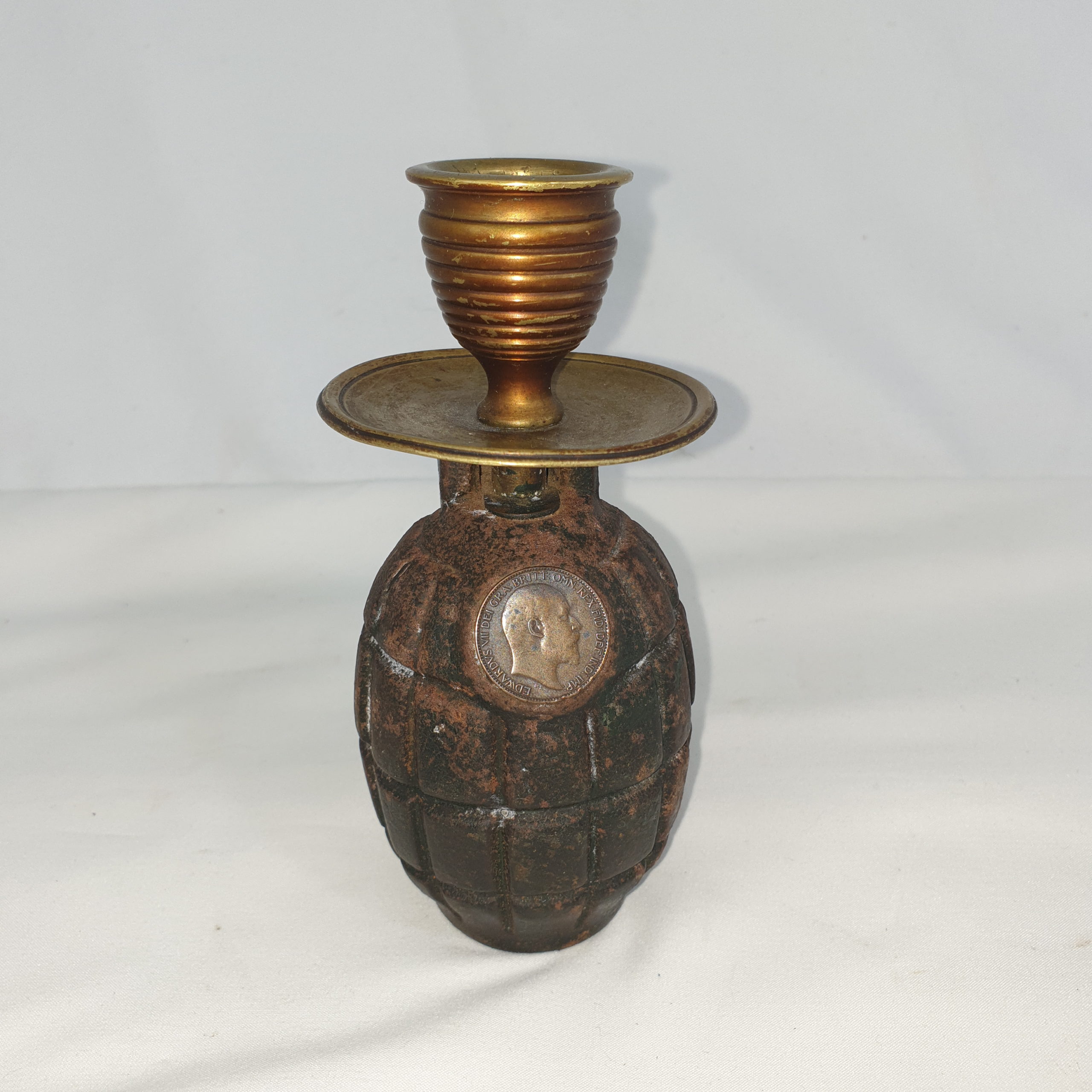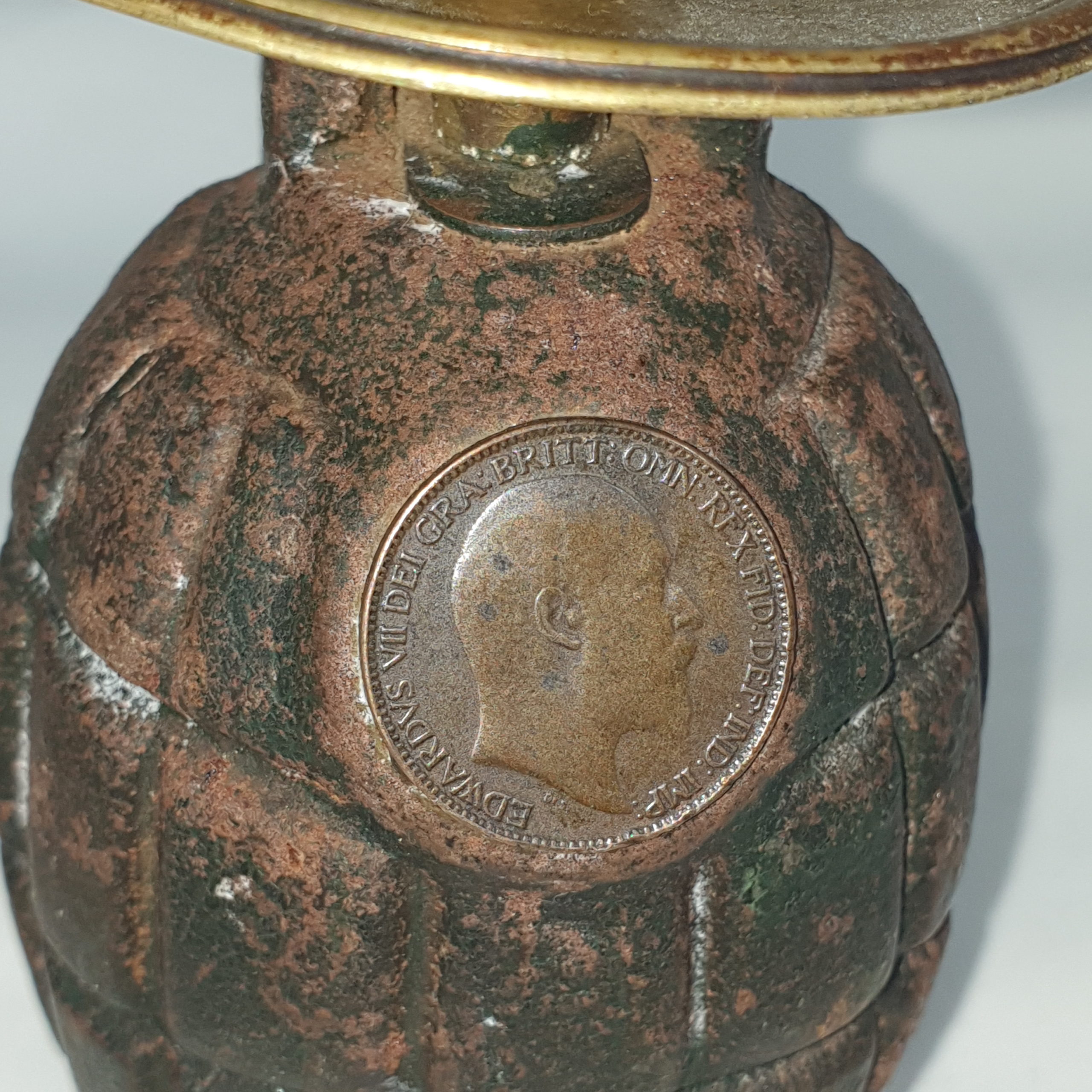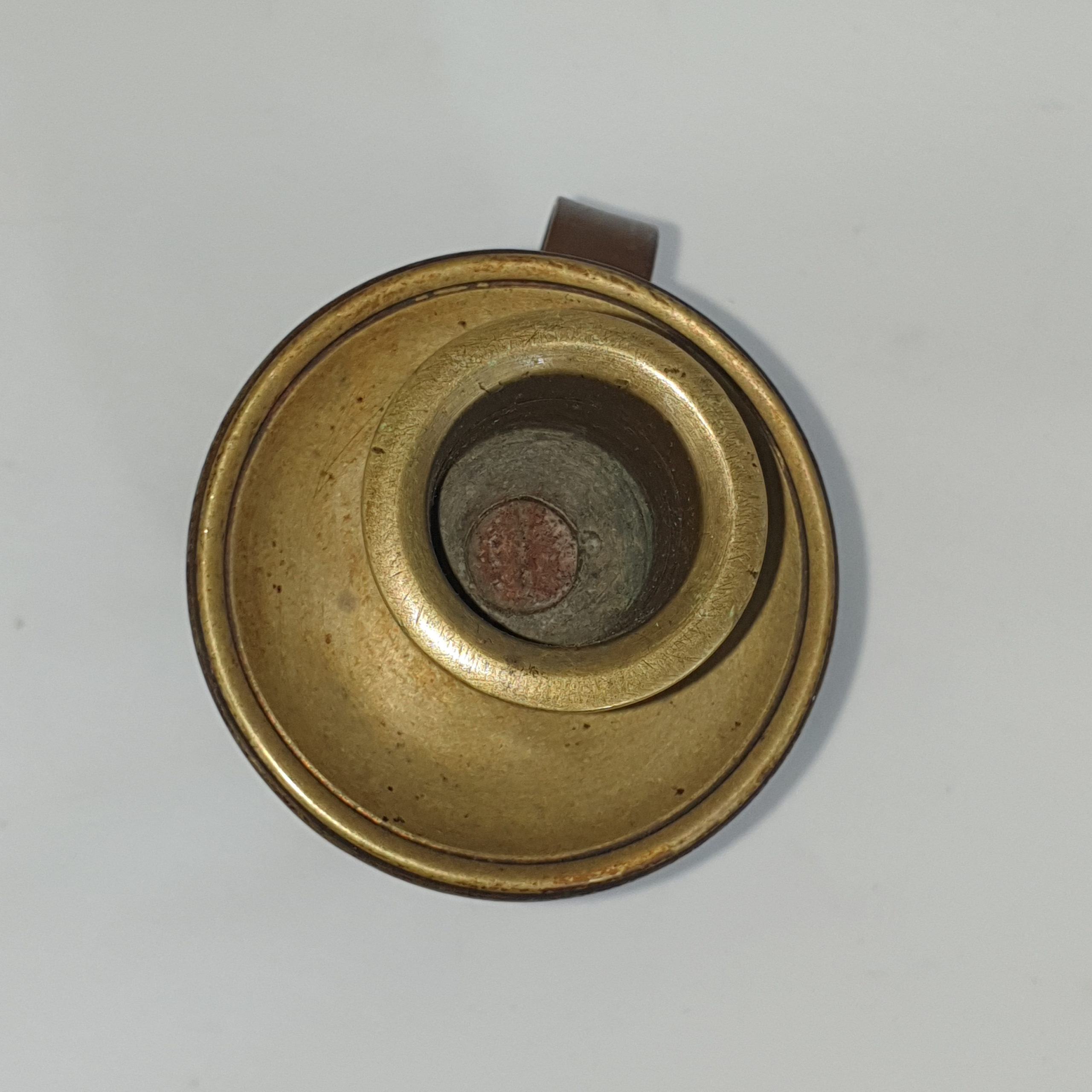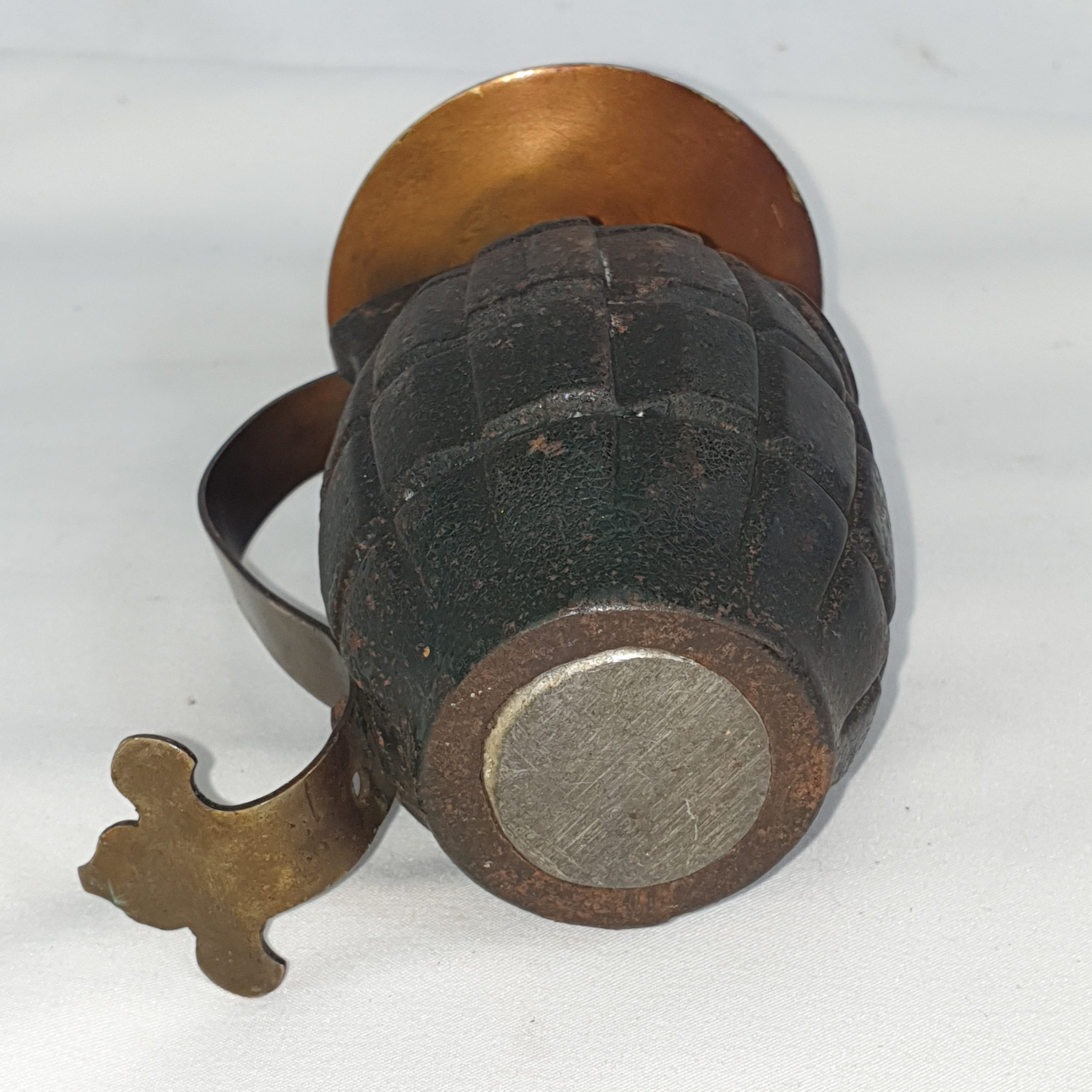~ WW1 Trenchart Mills Bomb Grenade Candle Stick ~
An exceptional piece made of a Mills bomb with a George Vth penny instead f the side-screw.
The Mills bomb, officially known as the No. 5 grenade, was the first modern hand grenade used by the British Army and became a standard weapon in World War I. Its innovative design set the foundation for modern fragmentation grenades used by militaries around the world. The development of the Mills bomb was crucial in addressing the need for effective trench warfare tools in the early 20th century.
Development of the Mills Bomb
The Mills bomb was invented by William Mills, a British engineer from Sunderland. Mills had a background in shipbuilding and engineering, and in 1915, he patented his grenade design, which was a significant improvement over earlier grenade types.
Before the Mills bomb, grenades were often improvised and dangerous to use, with inconsistent fuses and unreliable designs. Various early designs, including jam tin grenades, were used at the start of World War I, but they often failed to detonate or exploded prematurely. Mills solved these issues by creating a grenade with a reliable fuse, a more stable body, and a predictable detonation time.
Key Features and Design
Fragmentation Design: The Mills bomb was designed as a fragmentation grenade, meaning that its external casing would break into small, lethal fragments upon detonation. The grenade had a distinctive pineapple shape with grooves cast into the body. While it was originally believed that the grooves helped fragmentation, their primary purpose was to provide a better grip for the thrower. The actual fragmentation occurred naturally due to the brittle metal casing.
Dimensions: The Mills bomb was about 2.5 inches (6.35 cm) in diameter and weighed around 1 pound 11 ounces (0.77 kg). This made it small enough to be easily carried by soldiers yet still highly effective in combat.
Fusing Mechanism: The Mills bomb featured a 4- to 7-second time delay fuse, activated by pulling a pin from the grenade. This gave the thrower enough time to throw the grenade before it exploded. The fuse was a Bickford-type safety fuse, an innovation that made the grenade safer to handle than earlier designs.
Base Plug and Lever Mechanism: The grenade’s firing mechanism was simple but effective. The safety pin held down a lever, which, when released, allowed a spring to ignite the fuse. Soldiers could pull the pin with their thumb or teeth and then throw the grenade.
History and Usage
World War I: The Mills bomb was first issued to British forces in 1915 during World War I and quickly became one of the most iconic weapons of the war. Its design allowed soldiers to engage enemy forces in trenches and other fortified positions more effectively. The grenade was often used in coordinated attacks, with soldiers lobbing Mills bombs into enemy trenches before an infantry assault.
Variants: The original model was the No. 5, but several variations were developed:
No. 23: Adapted for use with a rifle by adding a rod to the base, allowing the grenade to be fired from a rifle.
No. 36: Introduced in 1917, this version improved the design and was waterproofed for use in tropical climates. It remained in service during World War II.
Post-WWI: After World War I, the Mills bomb continued to be used by the British military and other Commonwealth nations. It was also adopted by several other countries and used extensively in various conflicts, including World War II. The No. 36M variant, a refined version of the original Mills bomb, remained in use by the British Army until the 1970s.
Impact and Legacy
The Mills bomb is regarded as one of the most successful grenade designs in history. Its basic design principles, including fragmentation and timed detonation, influenced grenade development worldwide. The Mills bomb became a template for modern hand grenades used by various armies and was copied and modified by other nations.
During both World War I and World War II, the Mills bomb was considered a reliable, effective, and easy-to-use weapon, making it a staple of infantry equipment. Even after newer grenade designs emerged, the Mills bomb was a benchmark in military technology for decades.


